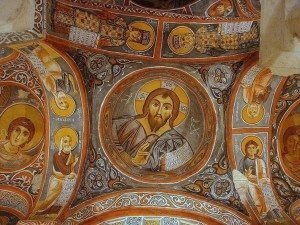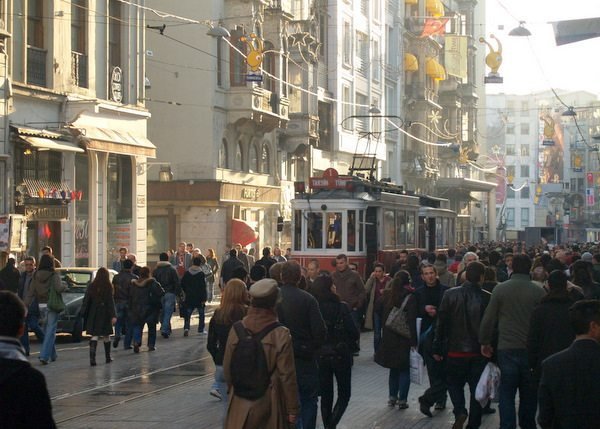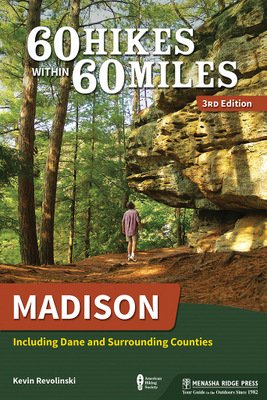Cappadocia, Turkey: In the Land of the Fairy Chimneys

I arrived at night so the landscape only revealed itself in the small glowing pockets of intermittent streetlights and the graceful sweep of headlights as the bus weaved along the curling highway to the town of Göreme in Cappadocia, a startling region in Central Turkey. Behind the faintly reflected image of a gaping tourist another world, full of giant, rocky teeth, slipped past.
Fairy chimneys, they are often called. Spires of soft stone naturally made by wind and rain over the years. A landscape like a mouthful of rotten teeth. Mars. The moon. Certainly not this world. Interspersed amongst small houses and stores were conical outcroppings, ranging in size from a small truck to about three stories high. The uniformity of the shape is what struck me first, but then the details began to emerge. Doorways. Windows. Stairs. Power lines. These were not simply part of the landscape, they were homes, some abandoned, and some still pouring out a warm but eerie light. Our bus stopped briefly and my Turkish friend Merve and I were the only two to get off.
The hotel was two blocks up a gentle hill from the main square of this small town. High walls, closely built homes, and the curving and steep road prevented us from seeing where we were heading. Only a small sign at the bottom of a walled staircase told us we had arrived: Kelebek Pansyon. Butterfly Pension.
We ascended to a patio. “What IS this place?” Three patios of varying levels rested between four towering fairy chimneys. Steps went this way and that and an office and small restaurant sat above and to the right of it all. I opened a wooden door into what in all appearances was a well-lit cave with a full bar. A blond woman in her fifties looked up from behind the bar and smiled. She showed us our room and we stepped down into another cave with two beds in it.
“Tonight this is all we have, but there should be a double bed opening up tomorrow night.” She left us and I flopped down onto a bed, fascinated. An extra third bed rested in an alcove in the wall and everything else was on a hollow hardwood floor made to fit the odd shape of the stone and strewn with rugs.
At a nearby restaurant we ate güveç, a stew—in this case chicken—baked in a small clay pot under a thin layer of cheese. We followed that with a half-liter bottle of a sweet red wine characteristic of the region.

Merve finished her tea, I grabbed my camera bag, and we headed for the stairs. Göreme Valley, our destination for the day, was just about a mile outside of town and we decided to walk. Along the way a carpet store set up under a tent distracted me for a few moments. Two women wove their wares right there in the midst of the merchandise. Turkey is famous for its fine carpets and a visit to a Turkish carpet shop usually includes a pleasant chat and a cup of tea before the seller even speaks to you of buying.
As we continued down the road, the valley opened up like the land of a fairy tale. I could imagine dwarves and hobbits, dragons and butterflies passing among the trails and staircases that only emerged from their surroundings when we were practically on top of them. As the sun rose, the stone became painfully white. The road passed through the park itself and in the center was a small visitor’s pavilion with restrooms. The first site I ducked into was a church.
See many more photos in my Cappadocia Photo Gallery.
In the fourth century Christians found the desolation and seclusion of Cappadocia fitting for monastic life, and many moved to the area for that purpose. In fact, even into the early twentieth century there were Christians living there. The ceiling rose up twenty feet and the walls were painted in religious frescoes. All the eyes or faces of the figures had been gouged out by Muslim invaders long ago. In the center was an altar, fashioned from the stone of the hill into which it was carved. I looked down into a steep metal staircase that led to a subcavern with more richly colored walls.
 I returned to the path outside and Merve and I kept on exploring. We passed in and out of long abandoned dwellings that were nothing more than a few small series of caves and tunnels. Without the extras as we had back at the hotel, they looked cold and foreboding.
I returned to the path outside and Merve and I kept on exploring. We passed in and out of long abandoned dwellings that were nothing more than a few small series of caves and tunnels. Without the extras as we had back at the hotel, they looked cold and foreboding.
Up a steep staircase carved into the rock was the doorway to Karanlık Kilise, the Dark Church, named as such because it was sunk deep into the stone and far from any external light source. But for want of the sun, this place glowed in the most vivid colors I had seen yet. The caverns were low over our heads and too small to hold more than a dozen people. But every inch of the curving walls told a story from the Gospels. The bright human figures were balanced out by a rich blue background full of rivers and hills and geometric designs. I narrated as many of the pictures to Merve as I could.
“The next place is ten kilometers. We can’t walk that. Is there a bus?”
“That will not be necessary. We can hitchhike.”
“Seriously?”
“Tabii. Of course.”
We stood at the edge of Göreme waiting for vehicles heading toward Zelve, our next stop. I felt awkward with my thumb in the air, still effectively conditioned by my mother that only psychopaths—axe murderers and the like—hitchhike or pick up hitchhikers. So I let Merve handle the situation. Fifteen minutes later, a Mercedes slowed down for us, and we stepped up to the window announcing our destination. The two men driving were very friendly and we hopped into the back seat. Our highway hosts were heading past the turn off to Zelve, but insisted on taking us the extra kilometer or so off their course to drop us off directly. Our lira donation was refused absolutely.
 We entered another valley that split into two distinct branches. Within each were deep ravines and an assortment of cave-homes. Dusty paths wove among tall dry grass that rustled gently in the breeze. Wild flowers of bright red and electric blue made vivid contrast with the warm but sandy-colored stone. As we ascended the trail we could see out the end of the valley where rich farmland spread toward the horizon occasionally broken by rock formations. I sat in the sun, staring across the ravine, attempting to discern the hidden dwellings in the cliff face. From time to time voices carried on the wind as though from the belly of a beast and moments later a head would emerge like a pigeon from its dwelling high up along a ridge that at first glance hadn’t looked traversable. Merve held up the back of her hand to show me something. I moved closer to observe a ladybug sunning itself on her knuckle.
We entered another valley that split into two distinct branches. Within each were deep ravines and an assortment of cave-homes. Dusty paths wove among tall dry grass that rustled gently in the breeze. Wild flowers of bright red and electric blue made vivid contrast with the warm but sandy-colored stone. As we ascended the trail we could see out the end of the valley where rich farmland spread toward the horizon occasionally broken by rock formations. I sat in the sun, staring across the ravine, attempting to discern the hidden dwellings in the cliff face. From time to time voices carried on the wind as though from the belly of a beast and moments later a head would emerge like a pigeon from its dwelling high up along a ridge that at first glance hadn’t looked traversable. Merve held up the back of her hand to show me something. I moved closer to observe a ladybug sunning itself on her knuckle.
“They bring good luck here. Do they bring good luck in the United States too?”
“Well, we consider them special, yes.”
I watched her as she watched the tiny creature flex its secret wings and slide away through the tall grass.
We ate lunch just outside the park in a restaurant in a cave. We were alone sitting on dusty seat cushions on the floor next to a low, rickety wooden table. The atmosphere made up for some rather low-grade kebaps and a glass of lumpy ayran, yogurt mixed with water and a bit of salt, which made me cringe after my first and only sip.
Merve apologized. “I’m sorry. I thought it looked fresh.”
On our way out we bought another small bottle of the sweet wine and had the shopkeeper loosen the cork. I packed it away in my camera bag.
We hitched the short ride back toward town, stopping at a village called Çavuşin where we visited the ruins of the Church of St. John the Baptist. A curling ridge half enclosed a tiny farming village and we climbed up chutes, through crawl spaces and through undecorated and roughly hewn rooms until we stood at a precipice. The ruins got smaller every year. As recently as the 1960s people had lived in these caves. But the erosion that created the hills would also destroy them. By the end of the 1960s, several people had been killed by collapsing abodes and the government had forced many to move their families for safety’s sake.
 Gül Vadisi or Rose Valley was the last site of the day. We followed a country road through olive orchards and past a cemetery. The graves were on a small rise along the road, and already the sun was dipping behind the headstones the light causing the stony landscape to fill with warmer tones. Unlike the tall spires or the jagged valleys, these rocks were lower to the earth and softly rounded as though made of marshmallow. The marshmallows turned rose and then faded to gray before we walked the rest of the way back to Göreme.
Gül Vadisi or Rose Valley was the last site of the day. We followed a country road through olive orchards and past a cemetery. The graves were on a small rise along the road, and already the sun was dipping behind the headstones the light causing the stony landscape to fill with warmer tones. Unlike the tall spires or the jagged valleys, these rocks were lower to the earth and softly rounded as though made of marshmallow. The marshmallows turned rose and then faded to gray before we walked the rest of the way back to Göreme.
The next day never saw the sun. An intermittent light drizzle kept everything sullen and made getting around a little less pleasant. We found a bus away from the fairy chimneys into rolling farmland to Uçhisar which turned out to be an ordinary Turkish town with only one special feature: its castle. It rose up from the earth like a deformity, like a giant asteroid dropped in the middle of a village on a green hill.
Our bus only passed the edge of town, so we had to meander through the streets to get there. But the sheer size of our goal and the simple one-story houses made navigation easy. When we emerged in the open, the castle was revealed in all its mammoth splendor. This was not what most would expect when they hear the word “castle.” Picture a piece of volcanic rock, a piece of tuff with all its black pores. Now magnify that to the size of a mid-sized high-rise apartment. The massive rock extended out from the steep hillside and rose up much higher than the rest of the town. Inside was a labyrinth of tunnels, a giant honeycomb filled with tourist shops and tourists.
 We climbed rock-hewn steps up several flights before the path took us outside and even higher before arriving at the Turkish flag that fluttered above it all. The horizon swept far away in all directions. Here and there a collection of red roofs marked a tiny village or geometric patches delineated crops and vineyards. All I could think of was that it all felt as though it were mine. And in its way, that’s what the little red flag had to say about it. I had a fleeting sense of conquest. All the world lay under my feet right then and there. For a moment I claimed it all. We climbed around as tourists and we snapped our pictures and bought trinkets. We ogled the farmland and giggled through the tunnels as through an amusement park. But this was a fortress. At some point, someone had stood where I was standing and said the same thing with no sense of irony: “Mine.”
We climbed rock-hewn steps up several flights before the path took us outside and even higher before arriving at the Turkish flag that fluttered above it all. The horizon swept far away in all directions. Here and there a collection of red roofs marked a tiny village or geometric patches delineated crops and vineyards. All I could think of was that it all felt as though it were mine. And in its way, that’s what the little red flag had to say about it. I had a fleeting sense of conquest. All the world lay under my feet right then and there. For a moment I claimed it all. We climbed around as tourists and we snapped our pictures and bought trinkets. We ogled the farmland and giggled through the tunnels as through an amusement park. But this was a fortress. At some point, someone had stood where I was standing and said the same thing with no sense of irony: “Mine.”
We went on to Avanos, a town known for its terra cotta wares. We wandered in and out of artisan shops full of clay pots and Turkish ceramics. We stopped for lunch and shared some delicious lamb and chicken kebabs. But the rainy sky was infectious and it soon sapped our energy. As we jostled along on a shuttle bus back to Göreme, I watched the raindrops slide past the rocky valleys in reverse order, and Merve fell asleep. In the failing light of the day, I could have mistaken it all for a dream.
See many more photos in my Cappadocia Photo Gallery.
Learn about buying a Turkish carpet or drinking Turkish coffee.
I spent a year in Turkey as a teacher and that experience became the subject of my first book, The Yogurt Man Cometh. Find out more about it here.
Places to Stay:
RECOMMENDED: Castle Inn in Ortahisar – read more about it here
Kelebek Special Cave Hotel
Rooms for two with breakfast start at 40 Euro
Aydinli Mah., Goreme / Nevsehir
See more (and cheaper in some cases) Goreme hotels at my recommended hotel site, Agoda.
Museum Hotel
Stay in rooms carved from the stone without sacrificing luxury.
Doubles starting at 200 Euro
Tekelli Mah.No.1
Uchisar-Nevsehir
More hotel options in Uchisar (using Agoda)
If you are really on the cheap, try Hostelworld: Hostels and Budget Accommodation Worldwide – Book Now!




 ORDER YOUR COPY TODAY!
ORDER YOUR COPY TODAY! ORDER YOUR COPY TODAY!
ORDER YOUR COPY TODAY!
Pingback: Photo Gallery: Cappadocia, Turkey
This is somewhere I’ve wanted to go for such a long time. It looks fascinating. Hopefully I’ll be able to go next year.
We stayed in Cappadocia for just under a week and were still mesmerised by the place when we were leaving. That was about 7 or 8 years ago and we really ought to go back. We stayed in Göreme and I think this time, we would do some decent trekking around there.
I remember Avanos. I was determined to come back with a souvenir from there and then saw the prices of everything! We’ve still got our little, plain, terracotta pot on the shelf. The cheapest thing in the shop. 😉
Julia
Crazy story: I did a book signing at the Chicago Turkish Festival a few years back. They put me up in the hostel with a couple guys who came from Turkey with their ceramics. They start showing me stuff, and I show them a photo of the Hittite sun symbol water pitcher. They both stand up, Only OUR family makes that! We page through my photos and sure as hell, I had been in their shop, and met their brother, etc. The next year they were back and they gifted me a little plate. 🙂